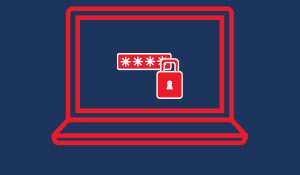How threat intelligence helps to protect your company?
The threat situation in cyberspace is constantly evolving. New attack vectors, techniques and vulnerabilities emerge every day. It is therefore...

In our increasingly interconnected world, where data flows freely and digital landscapes expand at a breakneck pace, the need for robust cybersecurity has never been more critical. Cyber threats, from the stealthy maneuvers of hackers to the insidious spread of malware, constantly evolve to exploit vulnerabilities in our digital defenses. To safeguard our sensitive information and digital infrastructure, understanding and managing these risks is paramount.
| TABLE OF CONTENT |
Whether you're a seasoned IT professional, a business owner, or simply someone who values their online security, this exploration of risk assessment in cybersecurity will provide valuable insights, practical knowledge, and a fresh perspective on protecting the digital environment.
A risk assessment is a systematic and comprehensive process of identifying, analyzing, and evaluating potential risks, hazards, or threats to assess their potential impact, likelihood of occurrence, and the effectiveness of existing or proposed measures for their management. The goal of risk assessment is to make informed decisions and take appropriate actions to mitigate, control, or accept those risks.
Risk assessment is a structured approach used in various fields, including business, safety, healthcare, and cybersecurity, to enhance decision-making and prioritize risk management strategies. And it is essential tools for identifying and mitigating threats and vulnerabilities, thus enhancing an organization's ability to achieve its objectives while minimizing the impact of adverse events.
A risk assessment in cybersecurity is a systematic and structured process of identifying, analyzing, and evaluating potential cybersecurity risks and threats to an organization's information systems, data, and technology infrastructure. The primary goal of a cybersecurity risk assessment is to understand and quantify the security risks an organization faces in its digital operations.
A cybersecurity risk assessment is a comprehensive process that involves evaluating an organization's digital assets, information systems, and potential threats to identify vulnerabilities and prioritize measures to protect against cybersecurity risks.
Early Threat Detection: Cybersecurity risk assessments enable organizations to proactively identify and assess potential threats and vulnerabilities. Early detection allows for timely responses to emerging risks before they can be exploited:
Strategic Decision-Making: Cybersecurity risk assessments provide valuable insights for strategic decision-making. Organizations can make informed choices about security investments, policies, and procedures based on a comprehensive understanding of their risk landscape.
Enhanced Security Awareness: Cybersecurity risk assessments contribute to raising awareness among employees about potential threats and the importance of security best practices. This leads to a more security-conscious workforce, reducing the likelihood of human error-related incidents.
Business Continuity and Resilience: Understanding cybersecurity risks allows organizations to develop robust business continuity and resilience plans. In the event of a cyber incident, these plans help minimize downtime and ensure that critical business functions can continue.
Protection of Reputation: Effective cybersecurity risk management safeguards an organization's reputation. By demonstrating a commitment to cybersecurity through risk assessments and mitigation efforts, businesses build trust with customers, partners, and stakeholders.
Continuous Improvement: Cybersecurity risk assessments are not one-time activities; they are ongoing processes. Regular assessments foster a culture of continuous improvement, allowing organizations to adapt to evolving threats and technologies.
Performing a risk assessment in cybersecurity involves a structured process to identify, analyze, and manage potential risks to your organization's digital assets and information systems.
1 |
Asset Identification: Identify and catalog all digital assets within your organization, including hardware, software, networks, and data. Understanding what needs protection is the first crucial step in assessing cybersecurity risks. |
2 |
Threat Identification: Identify potential threats and vulnerabilities that could affect your digital assets. This includes known cyber threats, malware, phishing attacks, insider threats, and any other factors that could compromise your cybersecurity. |
3 |
Vulnerability Assessment: Conduct a thorough assessment of the vulnerabilities present in your digital assets. This involves identifying weaknesses in your systems that could be exploited by cyber threats. Regular vulnerability scanning tools can be employed for this purpose. |
4 |
Risk Analysis: Evaluate the potential impact of identified threats exploiting vulnerabilities. Consider the likelihood of these events occurring. This step often involves assigning numerical values to represent the likelihood and impact, leading to a quantitative analysis of cybersecurity risks. |
5 |
Risk Mitigation and Treatment: Develop strategies to mitigate or treat identified risks. This could involve implementing security controls, enhancing security policies, conducting employee training, or adopting new technologies. The goal is to reduce the probability and impact of potential cybersecurity incidents. |
6 |
Monitoring and Review: Continuously monitor the cybersecurity landscape for new threats and vulnerabilities. Regularly review and update your risk assessment to reflect changes in the IT environment, emerging threats, or modifications in organizational processes. This ensures that your cybersecurity measures remain effective over time.. |
As the threat landscape evolves and your organization changes, you should regularly update and adapt your risk assessment to address emerging risks and vulnerabilities. It's also important to involve key stakeholders, such as IT personnel, management, and legal experts, in the risk assessment process to ensure a comprehensive and effective approach to cybersecurity.
In conclusion, a well-executed cybersecurity risk assessment is the cornerstone of a robust security strategy. It empowers organizations to proactively identify and address vulnerabilities, protect critical assets, and fortify their defenses against an ever-evolving threat landscape. Remember, cybersecurity is not a one-time endeavor; it's an ongoing commitment to safeguarding your digital infrastructure.
Please answer the following questions:

The threat situation in cyberspace is constantly evolving. New attack vectors, techniques and vulnerabilities emerge every day. It is therefore...

In the current age of digitalization, companies across various sectors and sizes face a growing risk of cyber attacks. Despite implementing...

Businesses find themselves constantly on guard against a wide array of cyber threats. Among these, one formidable adversary stands out for its covert...